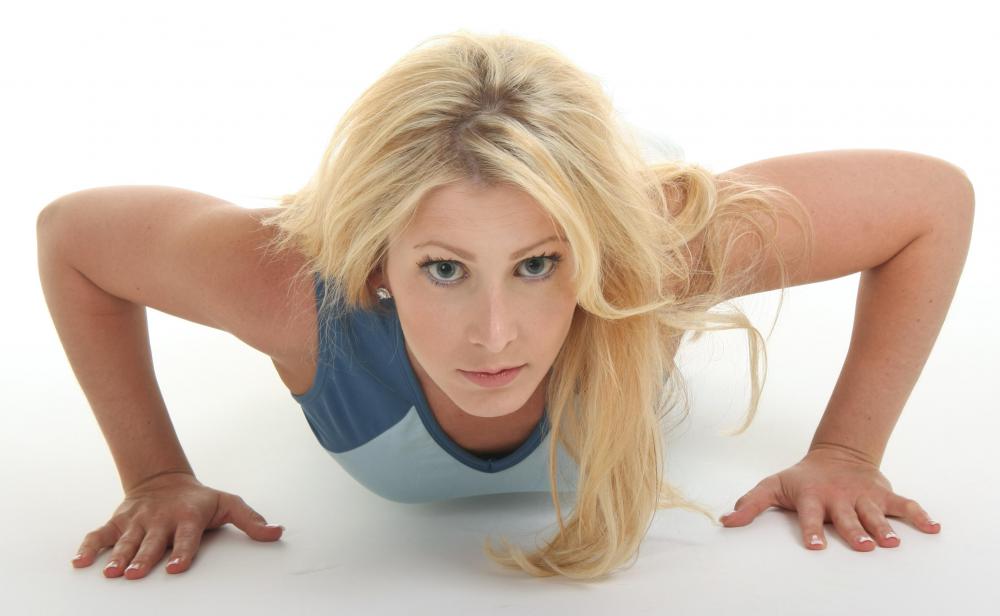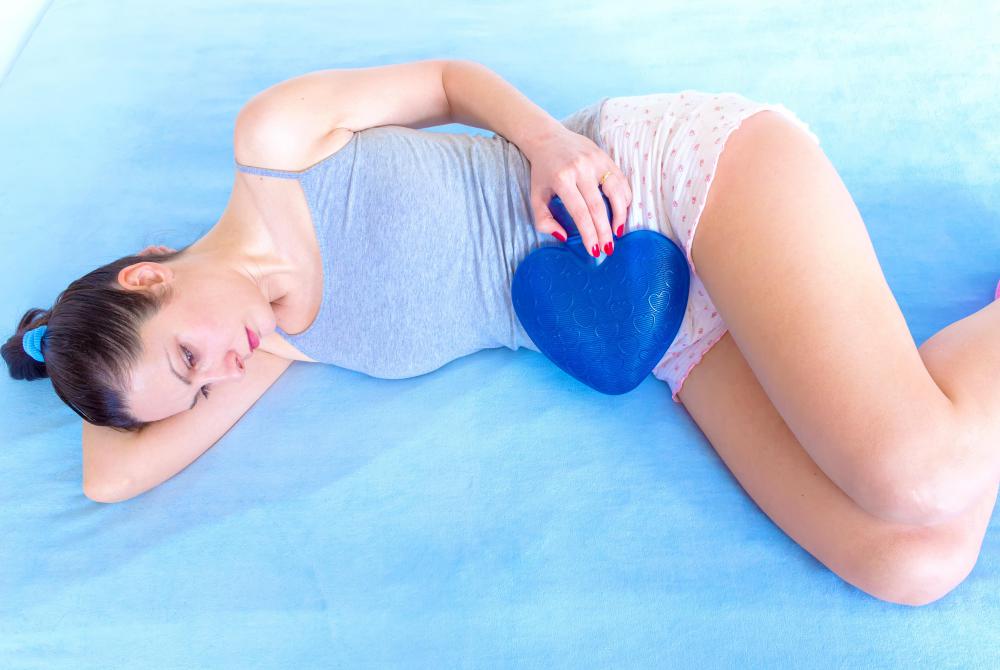At TheHealthBoard, we're committed to delivering accurate, trustworthy information. Our expert-authored content is rigorously fact-checked and sourced from credible authorities. Discover how we uphold the highest standards in providing you with reliable knowledge.
What is the Connection Between Exercise and Menstruation?
Medical studies suggest exercise can yield both positive and negative effects for menstruation. Exercise can mitigate symptoms of premenstrual syndrome (PMS) and make menstruation more tolerable. Another positive benefit of exercise for menstruating women is the reduced reliance on medications for PMS pain and stress. These beneficial side effects arise primarily from exercise that is light aerobic, rather than hard-impact or strength-bearing. According to studies of female athletes, intense exercises and harsh strength-training can negatively effect menstruating women by leading to a cessation of menses that can last for months or years.
This negative effect of strenuous exercise and menstruation has been studied for years as part of a phenomenon among women athletes known as “female athlete triad.” The triad includes interrupted menstruation, a loss of bone density, and extreme deficiency of the mineral iron, which is needed to replenish blood, including blood lost during the monthly menstrual cycle. With too much exercise, the body can deplete iron stores so much that no menstruation is possible. To avoid such detrimental results when combining exercise and menstruation, doctors recommend low-stress aerobic workouts with languid movements and stretching such as swimming, walking, and cycling.

Merging Eastern exercise and menstruation through yoga and Pilates can also be effective while providing mild muscle toning without the need to use weights. Therapists claim the mind-body-spirit connection in yogic and Pilates regimens can be especially calming for menstruating women. Doctors recommend starting exercise rituals seven days prior to an expected menstrual cycle to reap the best results. Some women, however, report a more relaxing menstruation even with just two days of prior exercise.

When it comes to the symptoms of PMS and menstruation, exercise has been shown to treat the following specific ailments: abdominal bloating, water retention, and painful cramps in the stomach area, which are caused by uterine contractions that break down and shed the uterine lining as part of menses. Gentle movements engendered by exercising can stretch and relax muscles in the pelvic area and uterus, reducing cramping. Other symptoms mitigated by exercise include mood fluctuations, headaches and cravings for sweets.

Known for triggering the body’s production of the feel-good chemical serotonin, exercise for at least 30 minutes can curb symptoms of depression and moodiness that are often triggered during the menstrual cycle. The need for serotonin, which is also abundantly present in cocoa, is often behind chocolate and sugar cravings; merging exercise and menstruation can, therefore, reduce menstrual-related hunger for sweets, studies show. Doctors warn superfluous exercise lasting one hour or more might have the opposite effect and create temporary low blood sugar, which can actually lead to cravings.

Endorphins and adrenaline, two other chemicals stimulated by exercise, can not only elevate feelings of wellness and happiness, but can also buffer menstrual pain, whether cramping or headaches, because these neurotransmitters are natural painkillers. The sweating caused by exercise during menstruation can help the body excrete excess water and sodium, reducing the symptom of bloating. Lastly, since some women gain 1 to 3 pounds (2 to 6 kilograms) during their monthly menses, combining exercise and menstruation can temper that cyclical weight gain, doctors report.
AS FEATURED ON:
AS FEATURED ON:














Discussion Comments
It all sounds great, but it's not very helpful for women who have debilitating cramps and/or backache when they start their periods. And unfortunately, as I can attest from personal experience, exercising before menstruation does not alleviate pain when the pain exceeds run-of-the-mill PMS. As I've gotten older, my pain has greatly diminished, and exercise helps me now, but for younger women who have severe pain, it may or may not help them. In any case, it's tough to get motivated to exercise when you're in such pain that sitting up is almost unendurable.
For these women, exercise before and after menstruation is probably more helpful.
Post your comments